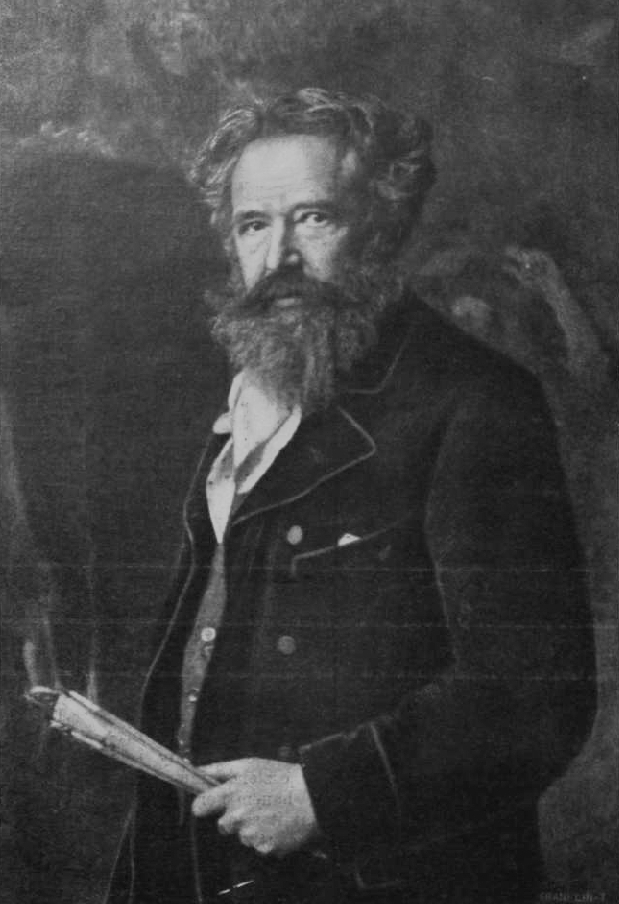ГЃrpГЎd Feszty on:
[Wikipedia]
[Google]
[Amazon]
 ГЃrpГЎd Feszty (; 21 December 1856 – 1 June 1914) was a Hungarian painter.
He was born in the town of Г“gyalla (then
ГЃrpГЎd Feszty (; 21 December 1856 – 1 June 1914) was a Hungarian painter.
He was born in the town of Г“gyalla (then
Works by ГЃrpГЎd Feszty
{{DEFAULTSORT:Feszty, Arpad 1856 births 1914 deaths People from Hurbanovo 19th-century Hungarian painters 20th-century Hungarian painters Hungarian male painters 19th-century Hungarian male artists 20th-century Hungarian male artists
Hungary
Hungary ( hu, MagyarorszГЎg ) is a landlocked country in Central Europe. Spanning of the Pannonian Basin, Carpathian Basin, it is bordered by Slovakia to the north, Ukraine to the northeast, Romania to the east and southeast, Serbia to the ...
, now Hurbanovo
Hurbanovo (until 1948 ''StarГЎ ДЋala'', hu, Г“gyalla, german: Altdala) is a town and large municipality in the KomГЎrno District in the Nitra Region of south-west Slovakia. In 1948, its Slovak name was changed to Hurbanovo, named after Slovak wri ...
, Slovakia
Slovakia (; sk, Slovensko ), officially the Slovak Republic ( sk, SlovenskГЎ republika, links=no ), is a landlocked country in Central Europe. It is bordered by Poland to the north, Ukraine to the east, Hungary to the south, Austria to the s ...
). His ancestors were German settlers (the original family name was Rehrenbeck). He was the fifth child of Silvester Rehrenbeck (1819–1910), an affluent landowner at Ógyalla, and his wife Jozefa (Linzmayer). Silvester was ennobled by the emperor on 21 April 1887, and the family thereafter took the name Martosi Feszty (or, in German: Feszty von Martos).Démy-Gerő family archive, Brisbane, Australia; Feszty mostly painted scenes from Hungarian history and religion.
He studied in Munich
Munich ( ; german: MГјnchen ; bar, Minga ) is the capital and most populous city of the German state of Bavaria. With a population of 1,558,395 inhabitants as of 31 July 2020, it is the third-largest city in Germany, after Berlin and Ha ...
from 1874, and later (1880–81) in Vienna
en, Viennese
, iso_code = AT-9
, registration_plate = W
, postal_code_type = Postal code
, postal_code =
, timezone = CET
, utc_offset = +1
, timezone_DST ...
. After returning home to Hungary, he was made famous by his two works entitled ''Golgota'' (" Calvary") and ''BГЎnyaszerencsГ©tlensГ©g'' ("Accident in a Quarry"). He painted his well-known monumental picture, the '' Arrival of the Hungarians'', depicting the Magyar conquest of Hungary in 896, for the 1000th anniversary of the Conquest, with the help of many others, including JenЕ‘ Barcsay
Jenő Barcsay (14 January 1900, Katona, Austria-Hungary (today Cătina, Romania) – 2 April 1988, Budapest, Hungary) was a Hungarian painter with Armenian ancestry.Gudenus János József: Örmény eredetű magyar nemesi családok genealógiáj ...
, DГЎniel Mihalik and LГЎszlГі MednyГЎnszky
Baron László Mednyánszky or ''Ladislaus Josephus Balthasar Eustachius Mednyánszky'' ( sk, Ladislav Medňanský) (23 April 1852 – 17 April 1919), a Slovak- Hungarian painter-philosopher, is one of the most enigmatic figures in the history ...
. It was seriously damaged during World War II
World War II or the Second World War, often abbreviated as WWII or WW2, was a world war that lasted from 1939 to 1945. It involved the vast majority of the world's countries—including all of the great powers—forming two opposing ...
(the painting, a cyclorama
A cyclorama is a panoramic image on the inside of a cylindrical platform, designed to give viewers standing in the middle of the cylinder a 360В° view, and also a building designed to show a panoramic image. The intended effect is to make view ...
with a circumference of almost 120 metres and 15 metres tall, and thus some 1800 m2 in area, was cut up into 8-metre-long pieces, which were rolled up and stored in various museum warehouses). It wasn't until 1995 that it was restored and exhibited at the Г“pusztaszer National Heritage Park
The Г“pusztaszer National Heritage Park is an open-air museum of Hungarian history in Г“pusztaszer, Hungary. It was established in 1982 and is most famous for being the location of the Arrival of the Hungarians, Feszty Panorama, a cyclorama by ...
in Hungary.
He lived in Florence
Florence ( ; it, Firenze ) is a city in Central Italy and the capital city of the Tuscany Regions of Italy, region. It is the most populated city in Tuscany, with 383,083 inhabitants in 2016, and over 1,520,000 in its metropolitan area.Bilan ...
from 1899 to 1902. After returning home, he painted smaller pictures and increasingly suffered from financial difficulties.
His art combined academic and naturalist tendencies. Several of his works are in the possession of the Hungarian National Gallery
The Hungarian National Gallery (also known as Magyar Nemzeti GalГ©ria), was established in 1957 as the national art museum. It is located in Buda Castle in Budapest, Hungary. Its collections cover Hungarian art in all genres, including the works ...
, Budapest
Budapest (, ; ) is the capital and most populous city of Hungary. It is the ninth-largest city in the European Union by population within city limits and the second-largest city on the Danube river; the city has an estimated population ...
.
His brothers Adolf and Gyula Feszty were both known architects; his daughter Masa (MГЎria) Feszty also became a painter of mainly landscapes, portraits and religious scenes. Among others, her portrait of the Hungarian sculptor Ede KallГіs
Ede Kallós (born Éliás Klein; February 17, 1866 in Hódmezővásárhely – March 11, 1950 in Budapest) was a Hungarian sculptor of Jewish heritage. His sculptural style integrated elements of realism and academism style mainly engaged in c ...
is owned by the Hungarian National Gallery.
References
External links
Works by ГЃrpГЎd Feszty
{{DEFAULTSORT:Feszty, Arpad 1856 births 1914 deaths People from Hurbanovo 19th-century Hungarian painters 20th-century Hungarian painters Hungarian male painters 19th-century Hungarian male artists 20th-century Hungarian male artists